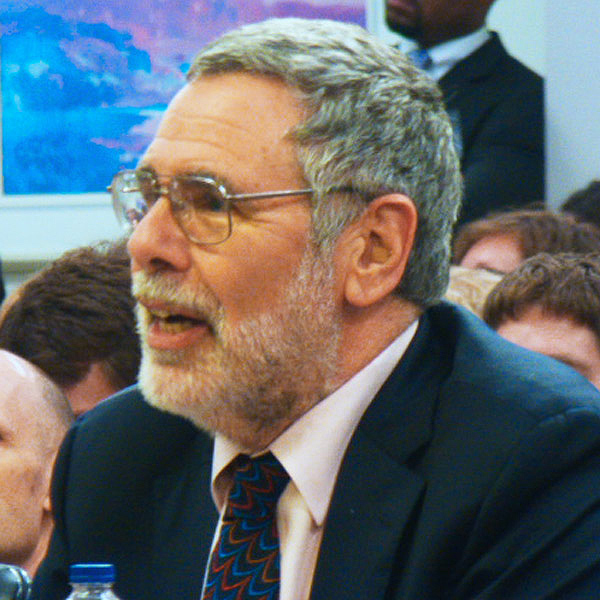
PJM members’ vote last week to limit resources’ capacity interconnection rights is not likely to end the dispute over how the RTO accredits intermittent resources.
Economist Roy Shanker, who filed a FERC complaint on Nov. 30, said Monday that members’ vote to change the rules was insufficient (EL23-13).
Shanker’s complaint alleged that PJM has been improperly permitting energy above renewable resources’ capacity interconnection rights (CIRs) to be entered into the Reliability Pricing Model (RPM) auctions as capacity, a practice he says is in violation of the RTO’s Reliability Assurance Agreement (RAA) and the interconnection service agreement (ISA) for each generator.
The result of the alleged over-accreditation, Shanker said, is diminished reliability, load overpaying for “phantom capacity” that does not meet reliability standards, artificial reduction of capacity prices for other resources; and inefficient economic decisions from market participants acting on potentially inaccurate information.
In response, PJM on Jan. 17 argued that the complaint stems from a mischaracterization of its standard ISA, which states that “to the extent that any portion of the customer facility described in section 1.0 is not a capacity resource with capacity interconnection rights, such portion of the customer facility shall be an energy resource.”
PJM said Shanker attempted to link this language to its accreditation of unforced capacity (UCAP), where no connection exists. Instead, it says the section is “a simple acknowledgement that a device is physically capable of providing energy above its CIR value, up to its maximum facility output level.”
 Roy Shanker | © RTO Insider LLC
Roy Shanker | © RTO Insider LLCPointing to FERC’s 2021 approval of its effective load-carrying capability (ELCC) construct, PJM argued that the protest constitutes a “collateral attack” on the commission’s past ruling and called it to be rejected as an “attempt to revive arguments rejected in prior proceedings.” (See FERC Accepts PJM ELCC Tariff Revisions.)
PJM also said Shanker did not demonstrate that the complaint is in response to an injury and that, as such, he lacks standing.
Shanker argued that FERC’s order accepting the ELCC methodology was partly based on testimony in which PJM presented “incomplete and misleading” information about ISA provisions, as well as the difference between test conditions and normal transmission relating to accreditation. He also said FERC’s approval of the accreditation methodology was never codified into PJM’s governing documents.
He noted that in its order accepting the ELCC construct, FERC wrote that PJM had stated that it will account for “historically binding transmission constraints by considering each variable resource’s historic performance, including instances of curtailment due to transmission constraints.” This has not been the case, he argued, writing that when defining CIR levels and deliverability requirements, PJM does not look at dispatch, system operation and the relative price of resources.
“PJM previously presented incomplete information to the commission in terms of the underlying facts related to this issue in material ways. When this is recognized, the entire prior conclusions of the commission become ‘flipped,’ and it becomes clear that output from an energy resource (defined as effectively ‘not capacity’) should be excluded in accreditation of variable resources with respect to the amount of AUCAP [accredited UCAP] they can sell (or should even be considered in any ELCC calculations),” Shanker wrote.
In comments defending PJM’s practice, a group of environmentalist and clean energy organizations jointly argued that Shanker’s complaint is based on a misreading of PJM’s tariff that each megawatt of capacity must equal 1 MW of deliverable power. With this interpretation, they write that FERC’s findings in the 2021 ELCC filing were well-informed and correct.
“The commission was not misinformed, but instead reached a well considered decision that it agreed with PJM on a disputed issue — a determination for which Dr. Shanker’s client in that matter did not seek rehearing,” said the Sierra Club, Natural Resources Defense Council, American Clean Power Association and Solar Energy Industries Association.
They also argued that the current practice does not introduce any reliability risks, as repeat PJM analysis has not identified any transmission upgrades required for existing intermittent resources. Citing information from PJM’s Data Miner portal, they also noted that wind resources delivered energy 350% times their CIR level during the December winter storm.
Stakeholders’ Accreditation Proposal may not Address all Issues
The Markets and Reliability and Members Committee endorsed a proposal last week addressing some of the same issues in Shanker’s complaint, including language that would cap the hourly output of resources to their CIR rating when using the ELCC analysis to set their accreditation. Shanker told RTO Insider Jan. 30 that the proposal would not, however, resolve the issue of hourly input above CIRs being entered into the accreditation for resource classes, leading to resource types being allocated inflated capacity payments to be divvied between generators in that category.
The proposal would limit the slice of the pie that an individual generator can receive but would continue to allow intermittent resources to have an overly large portion reserved for them, Shanker said. He also noted that the endorsed language remains a proposal and still requires the approval of the PJM Board of Managers and FERC.
“It never goes away once it gets into the database,” Shanker said of energy output above CIRs being included in resource class accreditation. “The pie increases, and it will always get allocated to someone.”
The complaint also asks that FERC order PJM to change its accreditation methodology immediately and potentially provide a form of retroactive relief. This would effectively eliminate the transition methodology included in the endorsed proposal, which would create a system for generation owners to submit uprate requests and seek access to available headroom on the transmission system until PJM processes their request for higher CIRs in the interconnection queue. Without the formal execution of an ISA recognizing the higher CIRs, Shanker argued that PJM does not have the power to grant a resource a claim on any available transmission headroom.
In comments on the complaint, the Independent Market Monitor agreed that PJM’s tariff dictates that the ELCC methodology must cap the hourly output for a generator at its CIRs when determining accreditation for both individual units and resource classes. The impact of PJM’s current practice has been overstated intermittent capacity suppressing the final clearing price in recent Base Residual Auctions (BRAs).
“PJM has, to date, based on a mistaken interpretation of the market rules, based on an initial oversight, included energy deliveries above the level of CIRs obtained for intermittent resources in defining the ELCC values for those resources, affecting both the capacity value of individual resources and the capacity value of the total ELCC resources and therefore capacity auction clearing prices,” the Monitor wrote.
Had the correct accreditation been used for solar resources in the 2022/23 BRA, the IMM estimated the resource class average derated MW would have been 20% lower, while for wind resources it would have been 48.9% lower. Ultimately the IMM estimates that generator revenue would have been 4.4% higher with the proper ratings.
The Monitor called on FERC to require that PJM correct its definition of the capacity available from intermittent resources for the 2025/26 BRA and to not permit that auction to go forward until the issue has been resolved. The auction is currently scheduled for June 14, 2023.

